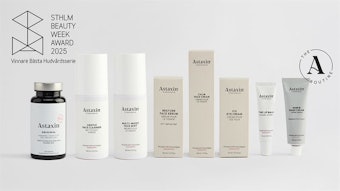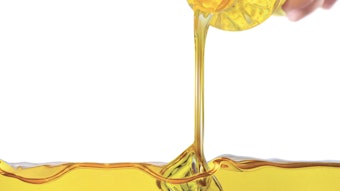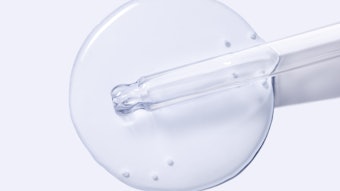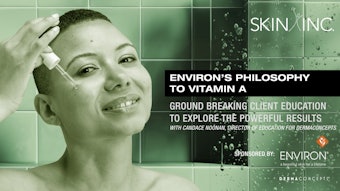
Hyperpigmentation is arguably the biggest concern and most troublesome skin issue you will treat in multicultural skin types as an esthetician. Hyperpigmentation can take several months to years to see improvements without proper use of lightening agents and corrective skin care treatments. When treating skin of color, daily use of lightening agents or products will have to be incorporated into the treatment program to compliment the treatment modality to effectively eliminate hyperpigmentation. Many of these lightening agents are available in professional skin care products as well as prescription formulas. They are usually applied once or twice a day to help lighten the skin over time. When treating skin of color, lightening agents and treatments can be performed individually or in combination therapy methods to achieve rapid results.
How Do Lightening Agents Work?
Lightening agents slow down melanin production in one way or in a number of different ways. Melanin synthesis is the conversion of tyrosine into DOPA and dopaquinone by an enzyme called tyrosinase. The actions of lightening agents is discussed below.
Mimic tyrosine. Lightening ingredients act as a mimic of tyrosine, essentially keeping tyrosinase too busy to produce as much melanin as before. This is the case for hydroquinone, mequinol, azelaic acid, arbutin and licorice extract.
Prevent tyrosinase. Lightening ingredients can also block off the important copper ions in tyrosinase, preventing the enzyme from working, as is the case of kojic acid. N-acetylglucosamine slows down the production of tyrosinase enzyme, meanwhile vitamin C (ascorbic acid) undoes the reaction of tyrosinase.
Slow melanonosomes. In the case of arbutin and its derivatives, the maturation of melanosomes (pigment producing organelles) is slowed.
Preventing transport. Ingredients like soy, niacinamide and retinoids prevent melanin pigment from traveling from the melanocytes where it’s made to the keratinocyte skin cells.
Dispersing pigment. Licorice root extract helps to disperse pigment.
Cell turnover. Alpha and beta hydroxy acids, chemical peels and retinoids increase skin turnover, meaning there are more skin cells being produced, and less pigment to go around.
Hydroquinone
This lightening agent is one of the most famous, most studied and most commonly used to treat hyperpigmentation in clients of color. However, it is heavily restricted in some countries and can be found in prescription and non-prescription strengths. Hydroquinone is the only U.S. Food and Drug Administration (FDA) approved product for eliminating hyperpigmentation on the market, and its effectiveness is solidly supported through multiple scientific studies. It works by reducing the activity of tyrosinase, an enzyme involved in the production of new melanin, and it is more effective than other lightening ingredients.
Hydroquinone acts as a mimic of tyrosine, essentially keeping tyrosinase too busy to produce as much melanin as before. Concentrations up to 2% and OTC hydroquinone are safe for all skin types, including people of color. Higher levels may still be effective, but do pose a greater risk of adverse effects in darker skin types. Most prescription-strength hydroquinone formulations contain 3–4%, but concentrations as high as 10% may be available through compounding pharmacies. When prescribed by a physician, it is often combined with other actives such as tretinoin, retinol, vitamin C or glycolic acid.
Possible side effects include skin dryness, irritation, itching, redness, mild contact dermatitis or allergic reactions. With prolonged use, it can also cause post-inflammatory hyperpigmentation or in severe cases, hypopigmentation.
Recently, laws have changed, and hydroquinone is primarily only available through a prescription, making it a challenge for estheticians to utilize it in their treatment rooms without working with a physician. However, there are some alternatives.
Mequinol
This is a prescription alternative to hydroquinone. It’s also known as methoxyphenol, hydroquinone monomethyl ether and p-hydroxyanisole. It is similar to hydroquinone in that it mimics tyrosine and decreases tyrosinase’s ability to make melanin pigment. Mequinol usually comes at a concentration of 2%, sometimes in combination with 0.01% tretinoin and vitamin C to enhance penetration. It has been found to be as effective as hydroquinone and less irritating, but can sometimes temporarily cause post-inflammatory hyperpigmentation.
Arbutin
Arbutin is known as a “natural hydroquinone” since its structure is similar to that of hydroquinone. It is found in extracts of bearberry leaves, and to a lesser extent in cranberry and blueberry leaves as well. Arbutin slowly turns into hydroquinone, acting as a tyrosine mimic to slow down the production of melanin. It also interferes with the maturation of melanosomes, organelles responsible for melanin production. When applied to the skin, it is slowly converted by the skin enzymes to hydroquinone, providing a slow-release effect. Combined with a retinoid, alpha-hydroxy acid and antioxidants, it is regarded as the best hydroquinone-free dark spot remover. Arbutin is commonly used in 5% strength, though higher concentration formulations exist.
Retinoids
Retinoids are some of the most popular and effective treatments for reducing sun damage and dark spots. Derivatives of vitamin A, examples include tretinoin, adapalene, tazarotene and isotretinoin, as well as retinol, available OTC. Clinical studies have shown that retinoids (including retinoic acid, retinol and retinyl palmitate) help reduce uneven pigmentation while strengthening elastin fibers and supporting structural collagen. This helps prevent breakouts and signs of aging, while acting as a penetration enhancer for other treatments. Retinoids can work in multiple ways to reduce pigmentation, including increasing skin turnover, interfering with transfer of melanin to the skin, reducing the amount of tyrosinase produced in the skin and dispersing melanin.
Azelaic Acid
Azelaic acid is a prescription-only acne treatment in many countries. It is slightly milder than hydroquinone, but in combination with retinoids has been as effective as 4% hydroquinone, with less side effects. It interferes with tyrosinase activity as a tyrosine mimic and suppresses and kills abnormal melanocytes. It can be used in 15-20%, sometimes combined with glycolic acid. Azelaic acid is known for the lack of side effects with its use – the main side effects are mild stinging and redness.
Kojic Acid
Kojic acid is produced by bacteria in the fermentation of rice in the manufacture of sake (Japanese wine). A derivative of kojic acid, kojyl-APPA has also been investigated for its whitening effect and improved skin penetration. Kojic acid binds to copper in tyrosinase, preventing it from performing its role in the production of melanin. It is usually found at 1-4% concentrations, often in combination with hydroquinone, retinoids and glycolic acid.
Licorice Extract
Licorice root has long been used for its natural “skin lightening” effects. It contains high amounts of compounds, including glycyrrhizin, glabridin and liquiritin that also helps block tyrosinase enzymes, which contribute to skin pigment changes. It can also help reduce collagen loss and improve the skin’s ability to absorb other ingredients.
Vitamin C
Vitamin C, also known as ascorbic acid, is an ingredient in many skin care products, due to its potent antioxidant activity. However, it is very unstable and is usually combined with other ingredients. Ascorbic acid turns dopaquinone back into L-DOPA, undoing the reaction that tyrosinase does. Ascorbic acid is typically found in 5-10% concentrations, and has an excellent safety profile with much less irritating potential than many other lightening agents.
Soy Proteins
Soy proteins are extracted from soybeans. The most studied lightening agent in soy is soybean trypsin inhibitor. Soybean trypsin inhibitor interferes with the transfer of pigment from the melanin-producing cells to the skin. It is not as effective as hydroquinone, but the lightening action of soy is reversible, and the side effects are minimal.
N-acetylglucosamine
N-acetylglucosamine is a sugar found throughout nature and in the body, and it is a precursor of hyaluronic acid. It slows down the production of tyrosinase enzymes, essential in the synthesis of melanin. Concentrations of 2% N-acetylglucosamine have been found to improve pigmentation in clinical studies and are frequently used in conjunction with niacinamide. There has been mild to moderate skin irritation in some cases.
Niacinamide
Niacinamide, also known as vitamin B3, is found in many plants. It is an antioxidant and is very stable. Niacinamide inhibits transfer of pigment to the skin. The typical concentration of 2-5% has been found to be effective in reducing hyperpigmentation in several studies. However, niacinamide is usually combined with other agents. Some skin irritation can occur.
Be Thorough
When deciding on the best types of lightening agents to use on your clients, keep in mind that side effects are less of a concern when using natural-based lightening agents versus chemical-based or prescription based lightening agents. However, combining the two or maybe only using your prescription based lightening agents for a relatively small amount of time can yield more rapid results, without too many complications or irritation. Be sure when performing facial modalities and implementing treatment protocols, you also recommend an effective home care regimen with proper instructions on how to use lightening agents on a daily basis, especially for your clients of color.
JoElle Lee is a veran esthetician with over 20 years of experience in all aspects of skin care. She is the founder of JoElle Lee Advanced Esthetics Training and JoElle Lee Skincare and is the author of two bestselling books, “Multicultural Skin Treatments: Learn How to Effectively Treat Skin of Color Using Chemical Peels and Laser Treatments” and “Esthetician on Mission Business Building Workbook.”










